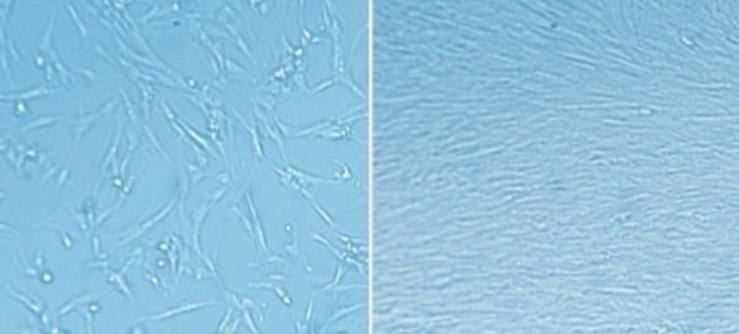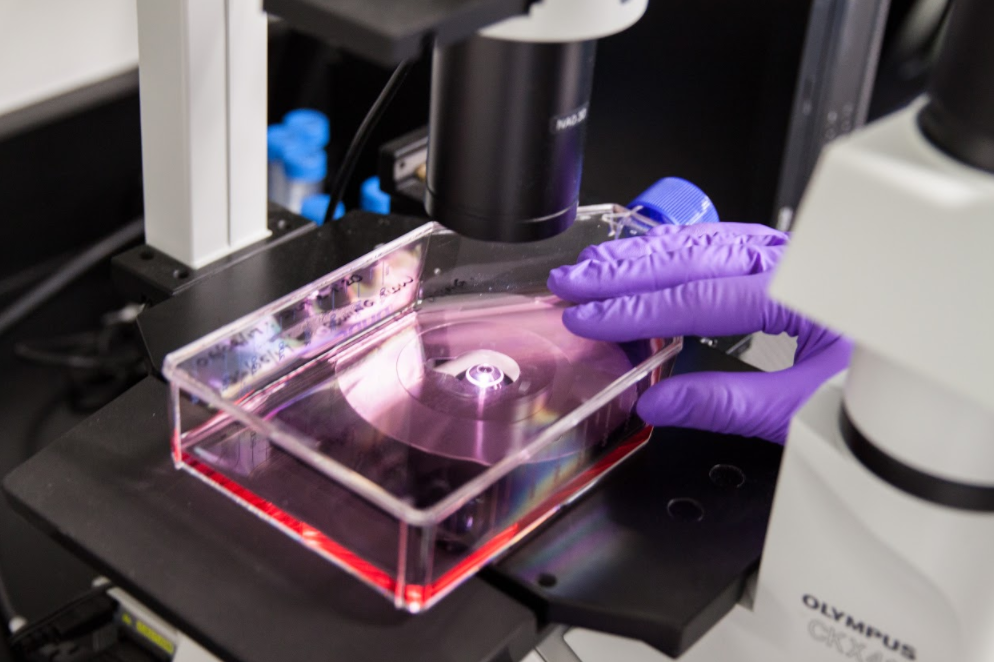Poor Adherent Cell Attachment Troubleshooting
What Affects Cell Attachment?
Optimal cell attachment in vitro requires the interaction of healthy cells with a wide range of cell-derived attachment molecules present in media, serum, and supplements. Cultureware surfaces are frequently treated with extracellular matrix proteins such as collagen, fibronectin, laminin, or other factors to facilitate attachment, though many adherent cell types will not require more than fit-for-purpose cell culture surfaces to successfully attach and form layers.

Figure 1. Extracellular matrix (ECM) coating enables rapid expansion of fetal lung fibroblasts. MRC-5 cells derived from human fetal lung fibroblasts were grown for 24 hours after plating on tissue culture plastic without (left) and coated with (right) extracellular matrix gel to enhance attachment.
Healthy and appropriately nourished cells re-engineer and optimize their attachment matrices. Cells that are cultured under suboptimal growth conditions attach poorly. When the culture surface provided is appropriate, the most common cause for failure of cells to attach to a substrate is environmental stress. Stress on cells in culture is mediated by biophysical conditions, or by components that are either present or formed in media. Read here for more information. Experiencing problems with your 3D cell models? Learn more about 3D cell culture methods and protocols here.

Figure 2.Monitoring cell health and adhesion in culture.
Environmental stresses that can prevent successful attachment of adherent cell phenotypes include:
- Contamination
- Incubator temperature fluctuations
- Insufficient or inappropriate cell culture surface/substrate
- Inappropriate environmental gas mixture
When all of the above can be ruled out, failure of cells to attach and form monolayers is likely due to inadequate nutrients in cell culture media or the gas environment. The table below lists essential cell culture media components, and explains how their omission or altered concentration can cause cell stress leading to detachment from the culture surface. This table includes tips that may be particularly helpful for troubleshooting detachment issues in serum-free media systems.
To continue reading please sign in or create an account.
Don't Have An Account?